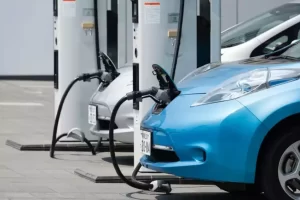The Most Popular Car Models of the Year for 2023

The ten most popular cars occupy almost one-fifth of the road. And though many of the models slid a bit in 2023 as supply chain issues continued to affect dealer inventories, most are still incredibly appealing choices.
A strong showing for mainstream brands like Subaru and Mazda is a sign that you don’t need to spend big bucks to get a safe, reliable, well-rounded vehicle.
1. Honda Accord
Amid the SUV onslaught, the Honda Accord remains one of the most popular sedan models out there. It’s a well-rounded car with great value, space, comfort and equipment. A fresh redesign for 2023 makes it more attractive to look at and a little nicer inside. Its infotainment system is easy to use, and it’s even better with Google Assistant, which can let you control functions with natural speech.
This model has the best curb appeal in its class, and it’s roomy enough for families while offering great fuel economy. Its 252 hp turbocharged four-cylinder engine offers confidence-inspiring acceleration, and its available adaptive suspension automatically adjusts every two milliseconds for a smooth ride. It also carries a wide variety of equipment options and has a spacious rear seat.
2. Honda Civic
The Honda Civic continues to dominate the compact-car segment with its great design, value, fuel economy, high resale values, and superb driving dynamics. While the performance-oriented Civic Si and Civic Type R add a dose of fun, the standard sedan and hatchback also deliver plenty of enjoyment for less-demanding drivers.
The 2024 Civic also sets itself apart with a quiet, spacious cabin, lots of safety equipment, and a wide range of standard features that rivals often charge for. Its rear seat legroom is among the best in the class, and it offers more storage space than the Toyota Corolla or Nissan Sentra. This latest Civic also delivers a smooth ride that isolates well over broken pavement. However, choppy road noise intrudes at higher speeds.
3. Mazda CX-5
The 2023 Mazda CX-5 is a top-ranked crossover SUV that delivers a rewarding driving experience and a comfortable, luxurious cabin. It also has an attractive exterior design and a robust set of standard features, including forward collision warning and mitigation, blind-spot monitoring, and lane keep assist. The interior is mature in style and not swathed in poorly rendered fake wood or overly reflective chrome trim, and the rear seats offer plenty of headroom and legroom.
Powered by a 187-horsepower four-cylinder engine, the CX-5 accelerates from a stop to 60 mph in about eight seconds and gets excellent fuel economy ratings for its class. It’s a good choice for singles, couples, and small families who want to commute or run errands in comfort. However, the CX-5 lacks the cargo room found in rivals, making the Kia Sportage and Toyota RAV4 better options for families.
4. Subaru Crosstrek
Subaru tweaked the Impreza hatchback with more ground clearance, rugged exterior trim and a more powerful all-wheel drive system to create the Crosstrek. It remains the best choice for those who want a maneuverable, compact SUV that can handle winter weather and weekend camping trips.
The Crosstrek’s 2.0-liter flat-four engine has 152 horsepower and 145 pound-feet of torque. It’s mated to a continuously variable transmission and gets up to 29 mpg combined.
Higher-end Crosstrek models get a 2.5-liter four-cylinder with 182 horsepower. While it’s still not fast enough to drag race your neighbor’s Honda HR-V, it’s plenty nimble for everyday driving and surprisingly fuel efficient at up to 34 mpg combined. It also benefits from the Subaru’s proven engineering behind Symmetrical All-Wheel Drive, which has proved durable in decades of owner tests.
5. Hyundai Tucson
Hyundai’s daring exterior design positions the Tucson for fame, but its dull cabin dims its shine. Still, it has the best passenger and cargo space of its competitors.
It’s easy to get comfortable in the Tucson. Its front seats are manually-adjustable and supportive, while its rear seat has enough room for three adults.
The Tucson is packed with tech features, too. Every model comes with automatic emergency braking, blind-spot monitoring, rear cross-traffic alert, lane keep assist, and a driver inattention warning system. N Line models add steering wheel haptic feedback and a surround-view camera system, while Limited trims offer lane centering and remote smart parking assist.
Its only real limitation is a slightly firm ride around town that struggles to smooth out big dips and ridges, but it’s better than the crashy ride found in some SUVs.









